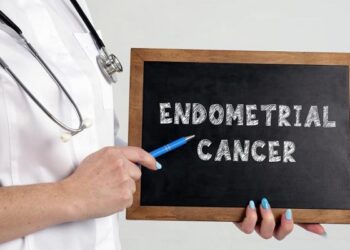Ozenoxacin, a novel bactericidal non-fluorinated quinolone that successfully completed a first phase III clinical trial in adult and paediatric patients with impetigo, is available from Ferrer for licensing and commercialisation
Ferrer, a privately-held Spanish pharmaceutical company, today announces that the first patient has been recruited into a second phase III trial of Ozenoxacin, formulated as a topical treatment for infectious dermatological conditions in adult and paediatric patients with impetigo. The study is scheduled to complete in Q1, 2015.
The multicenter, randomised, double-blinded, clinical study comparing Ozenoxacin one per cent cream versus placebo will be conducted in about 412 patients aged two months and over with a clinical diagnosis of non-bullous or bullous impetigo at approximately 36 centres in the USA, South Africa, Germany, Spain, Romania, Russia and Puerto Rico, subject to completion of additional regulatory approvals (further details will be made available athttp://www.clinicaltrials.gov).
In 2013, Ferrer successfully completed a first phase III clinical trial of Ozenoxacin in adult and paediatric patients aged two years and over with impetigo. The study demonstrated the superiority of Ozenoxacin one per cent cream versus a placebo, applied topically twice daily for five days, on both the clinical and bacteriological endpoints by end of therapy visit. In addition, Ozenoxacin demonstrated a superior bacteriological cure compared to placebo by the second visit (day three-four). The trial also demonstrated that Ozenoxacin is safe and very well tolerated in the adult and paediatric populations.
“Impetigo due to bacterial skin infections remains a common problem, especially in infants and young children,” said Fernando Garcia Alonso, chief scientific officer at Ferrer. “The emergence of treatment resistant bacterial pathogens underpins the need for alternative agents such as Ozenoxacin. The clinical studies with Ozenoxacin performed by Ferrer aim to provide infants and others with impetigo an alternative, safe and effective topical antibacterial treatment. In addition, Ozenoxacin could represent a topical treatment for a broad range of other infectious dermatological conditions.”
The product is available for licensing worldwide from Ferrer, except in China, Japan, Korea, Taiwan, USA, Puerto Rico and US Virgin Islands.
About Ozenoxacin
Ozenoxacin belongs to a new generation of non-fluorinated quinolones. It is undergoing clinical development as a topical one per cent cream for dermatological infections. The bactericidal action of Ozenoxacin has resulted in excellent in vitro and in vivo antibacterial activity against a broad range of pathologically relevant bacteria, including methicillin-resistant Staphylococcus aureus strains and clinical isolates of organisms with emerging resistance to quinolones and other topical antibiotics.
The clinical efficacy of topical Ozenoxacin cream has previously been demonstrated in a first phase III study in impetigo patients, as well as a phase II dose-finding study in adult patients with secondarily infected traumatic lesions (SITLs). Extensive preclinical and clinical studies conducted in healthy subjects and adult and paediatric patients (aged two months and older) have demonstrated that topically formulated Ozenoxacin is efficacious, safe and well tolerated, exhibiting no dermal absorption and no evidence of the adverse effects associated with topically formulated halogenated quinolones.
Ferrer obtained exclusive worldwide rights (except China, Japan, Korea and Taiwan) to Ozenoxacin from Toyama. Ozenoxacin formulated as a one per cent topical cream is the subject of a number of granted and pending patent applications.
About Impetigo
Impetigo is a highly contagious bacterial skin infection. It most commonly affects infants, young children and those involved in close contact sports or living in enclosed environments. It is not common in adults. In the USA, impetigo is estimated to account for approximately ten per cent of the skin problems observed in paediatric clinics. It is also considered the most common bacterial skin infection and third most common skin condition in children.
The condition usually manifests itself as blisters or sores on the face, neck, hands and trunk. Scratching may spread the lesions to other parts of the body. The infection is transmitted between individuals by direct contact with lesions, with nasal carriers or sharing of towels etc.
There are two types of impetigo: bullous, which causes large, painless, fluid-filled blisters and non-bullous (70 per cent of cases), which is more contagious and causes sores that quickly rupture to leave a yellow-brown crust. Both the bullous and non-bullous forms of impetigo are primarily caused by Staphylococcus aureus, with Streptococcus pyogenes also commonly involved in the non-bullous form.
About Ferrer
Founded in 1959, Ferrer is a privately-held Spanish pharmaceutical company. It is present in more than 90 countries, with 27 international affiliates. Ferrer is active in the pharmaceutical, health, fine chemicals and food sectors, key areas for contributing to people’s health and quality of life.
The main therapeutic areas covered by Ferrer’s pharmaceutical production are dermatology, cardiovascular, CNS, cancer, gastrointestinal, analgesics, bone metabolism, anti-infective, immunology, diagnostics, OTC and dermocosmetics.
Mark Tidmarsh
mark@ala.com
ANDREW LLOYD & ASSOCIATES
http://www.ala.com
Tel UK: +44 1273 675100
Tel France: +33 1 56 54 07 00
Tel US: +1 617 517 0146
INTERNATIONAL TECHNOLOGY MARKETS, STRATEGY & COMMUNICATION

















